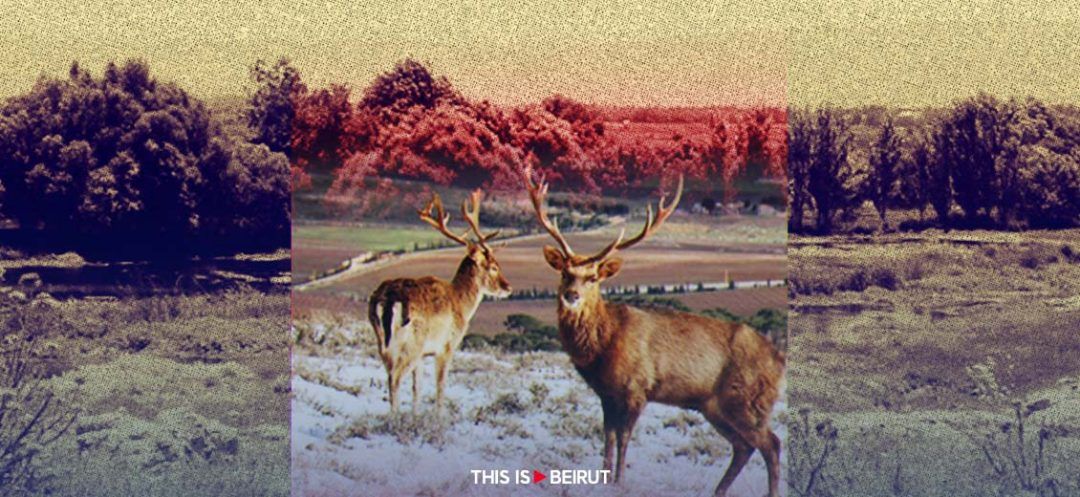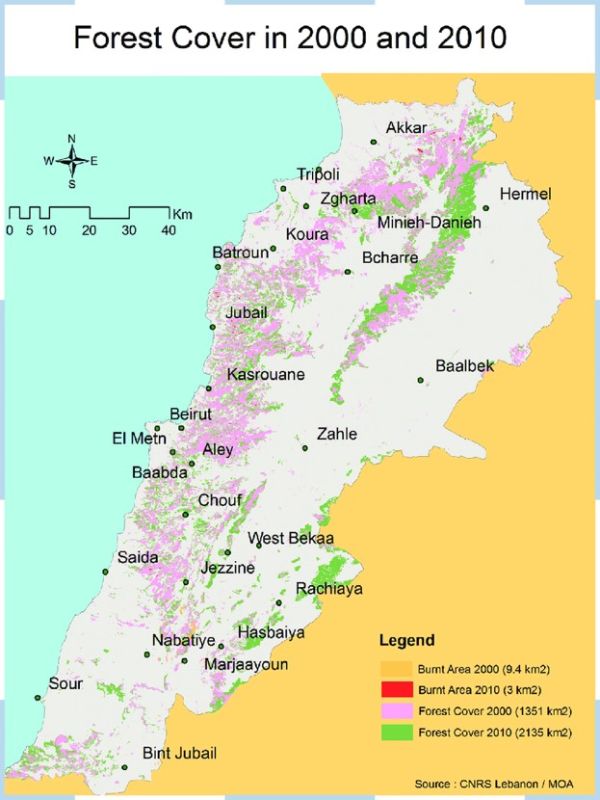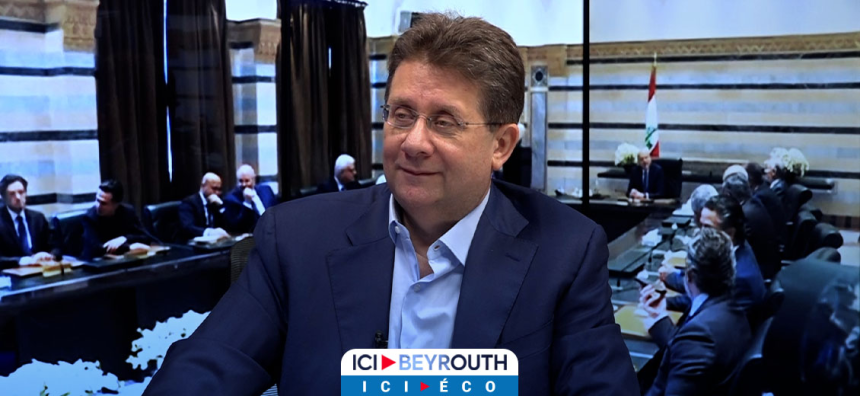
More than a dozen of them are reported every week, strewn inert across Lebanon's coastal highways.
Stockier than foxes, slimmer than wolves, so many golden jackals cross fast ways, eking their way down from the hills, hunting for food close to towns. Spotting them lifeless on roadsides, north and south of Beirut, has become a regular sight.
For this staple of Lebanon’s biodiversity, with green hilltops and valleys overlooking an azured Mediterranean, the country’s diverse topography is an example of how urban life and the wild meet, and sadly collide.
Another week unfolds and the hotline number of rings busy until late in the day. Plenty of injured jackals’ admissions fall into the hands of this self-funded NGO, dedicated to rescuing, treating and releasing wild animals back into their natural habitat. Often found in critical condition, requiring multiple costly medical interventions and months of care, most are hit by cars and fill up the tally of thousands of wild animals suffering and dying slowly each year on the country’s roads or after being plainly shot by hunters.
Wounded jackals have become an all season sight. Pups are particularly more prone to accidents in spring, when weaned and starting to explore.
But other than the dismal loss of life and the urgent need for road safety awareness where wildlife crosses over, this predicament also tells of a magnificent story… A narrow strip of land like Lebanon has a profuse landscape and is home to abundant biodiversity that is said not to be found in other larger countries. Hence, efforts to preserve it are vital.
With unchecked urban development and the fragmentation of green areas, the habitat of the golden jackal, and that of other wildlife in the country, shrinked and continues to be threatened.
Lebanon: A Biodiversity Hotspot
Lebanon is considered a “hotspot” for biodiversity in the Mediterranean Basin. For what was dubbed the greenest country in the Middle East, now with shrinking Cedar woodlands, – a national source of pride adorning the national flag –, a shadow has been cast on its wildlife and forests: they are overwhelmed by the tremendous pressures resulting from a string of ill fortunes, including unregulated development and queries, landfills, frequent fires, air, land and water pollution, illegal hunting practices, climate change and lastly a symptom of economic woes: wood cutting.
Lebanon’s varied terrain goes from 3,089 m, at Qornet el Sawda, the highest peak in the Middle East to sea level, giving way to mountainscapes occupying most of the territory. Terrain, climate, soils and vegetation differ noticeably within short distances, making it as rich and diverse in ecosystems and wildlife as in religious sects that the country houses.
While they covered more than 35% of Lebanon in 1965, forest areas now cover only around 13% (more than a third of the territory in France by comparison), as mentioned in a country report by the Food and Agriculture Organization in 2010. Other Wooded Land (OWL) covers about 10% of the territory, yielding a total of about 23% (Ministry Of Agriculture , 2015).
 Forest cover and burnt areas in 2000-2010 (CNRS/MOA, 2010)
Forest cover and burnt areas in 2000-2010 (CNRS/MOA, 2010)Lebanon Forest Map, Ministry of Agriculture
According to Lebanon’s 2016 National Biodiversity Strategy and Action Plan, there are currently 9,119 known species, including both fauna (4,486 species) and flora (4,633 species).
It is home to one subspecies of grey wolves known as the Grey Arabian Wolf (Canis lupus arabs). Partnering with the Cardiff University School of Biosciences, Lebanese Wildlife strived to uncover which wolf subspecies is found in Lebanon by collecting DNA samples and studying the matrilineage of rescued species.
Deforestation, urbanization and illegal hunting rendered mammals like hyenas and wolves highly endangered. The NGO argues that the country could lose these extraordinary apex predators which are fundamental to the functioning of its ecosystem, the regulation of disease and the maintenance of biodiversity. These species are often killed to prevent them from attacking farm animals and for the fear they still inspire. A high hybridization of wolves with feral domestic dogs occurred as well from loss of habitat, a risk for loss of genetic diversity and species extinction.
[gallery size="full" ids="223698,223699,223700"]
Jabal Moussa, a Haven for Biodiversity
Rare and threatened mammals found shelter in the rugged mountains of Jabal Moussa reserve, on the western slopes of Mount Lebanon, besieged by a multitude of queries that contrast with its green peaks.
Joelle Barakat, the reserve’s conservation manager says that the association for the protection of Jabal Moussa was set up to halt continuous land violations inside the mountain range, like road carving and the establishment of random queries.
The reserve is an example of a typically mediterranean biome: a mid mountain forest, very diverse, rich in deciduous trees (losing leaves in autumn) and varying altitudes. Designated a UNESCO Biosphere Reserve since 2009, it covers an area of 65 km2 (6500 hectares), with altitudes ranging from 350 meters to 1,700 meters.
As a privately protected area classified as a “natural site” in Lebanon, it is a biodiversity haven, home to more than 700 species, some endemic to the site, amongst them 114 medicinal plants and more than 137 migratory and soaring bird species (Jabal Mousa wildlife database). It has become a breeding site and a safe space for wild animals like wolves.
[gallery size="full" ids="223701,223702,223703"]
Preserving the natural habitat of wild animals in Lebanon is imperative, says Barakat, "We cannot compromise on green areas and need to take a stand for conservation.” With a lack of large enough forests to host them, fragmented forests provoked the disappearance of bear and deer species. Barakat lamented that in Lebanon, “we are compromising on conservation to accommodate development, letting roads pass through, whereas alternatives could be possible for sustainable development through ecotourism, eco friendly agriculture and agroforestry instead of heavy infrastructure. We are suffering from a lot of fragmented reserves, which after being established are divided to accommodate roads.”
While the reason is seldom development, Barakat said that the real aim is the construction of big infrastructure projects like dams. She maintained that there is a lack of proper planning, and absence of designation of areas for conservation or industry, as proposed in the territorial development master plan drafted in 2006 by the Council for Development and Reconstruction.
Meanwhile, the Jabal Moussa association works on raising community awareness, focusing on the essential role of wildlife in the ecosystem and the importance of preservation efforts. Wrong deeply-entrenched perceptions about wild animals are difficult to change in older generations. Peculiar urban legends such as losing voice at the sight of a wolf are still rooted, for example, among local shepherds, fearful for their herds.
[gallery size="full" ids="223704,223705,223706"]
Dr. Mounir Abi Said, biodiversity management professor and mammologist at the Lebanese University, points out that the best way to preserve nature is to let it take its course.
He explained that picking edible plants helps diversify species and prevents one type from dominating. The same principle applies for trees, cutting off denser ones helps give space to smaller shrubs to grow and helps diversify forests.
The state has a role to play in protecting wild species: illegal hunting and stray animal poisoning are rampant and unregulated in Lebanon. Although protected by an animal welfare law, animals like foxes, jackals and wild birds are kept captive (fear for livestock and for commercial purposes). NGOs like , and intervene by confiscating and releasing them back to their habitat.
Pivotal Forestry Efforts by the EU
The European Union held a significant role in the protection and conservation of forests in Lebanon. Its efforts have been focused on capacity building for the management of natural reserves, boosting the environmental role of forests, integrating them into local economies and drafting laws to safeguard mountains.
Alessandra Viezzer, Head of Cooperation at the EU Delegation to Lebanon contends, “The European Union is committed to supporting Lebanon in preserving its rich biodiversity. We are currently supporting local partners in formulating a draft law to protect Lebanese mountains. We are also engaged in several initiatives in the country to empower local communities to effectively manage protected areas.”
In Lebanon, the EU delegation supports Al-Shouf Cedar Society (ACS / Dec 2021 – Nov 2025) by enhancing the management and governance of sites of ecological importance and encouraging the creation of Protected Areas (Himas). The project covers the and surrounding regions, with protected areas in the Shouf, South Bekaa, Metn, Tyre coastal and nature reserve, and Rashaya, where a new protected area was created in Mount Hermon.
A community-based approach of empowering civil society and state actors (municipalities and unions) to ensure good governance and effective management of forest sites proved to be a promising and efficient way to preserve green lands and forests. The concept of Himas is a very good example of improving the sense of ownership by locals given that preservation practices result in direct social, health and economic benefits.
Local communities play a vital role in the projects’ activities in all selected protected areas, notably in the Shouf Biosphere Reserve and in the Himas.
Lebanon continuously experienced increasing pressure on several environmentally sensitive areas, or ESAs – wildlife habitat areas, steep slopes, high mountain lands, coastal areas and wetlands – without having practical and efficient tools for their protection and conservation. Terre Liban, an EU-funded project, is working on protecting ESAs, vital to the long-term conservation of biodiversity and maintenance of other natural resources.
Underlining the fact that forests and reserves are an important part of Lebanon's common heritage and national identity, Terre Liban has also been working on formulating a draft law for high mountains, to address the sensitive environmental conditions that characterize Lebanon’s highlands. The draft law proposes a robust protection strategy that completely prohibits investment in all Lebanese territories situated above 1,900 meters.
“Lebanon’s biodiversity is at high risk of degradation. To face this threat, decision-makers need to pursue reforms in polluting sectors and include adequate funding for the protection of natural reserves in state budgets,” Viezzer stressed.
Read more





Comments